Part 16: Episode 3-4: Cursed Burden
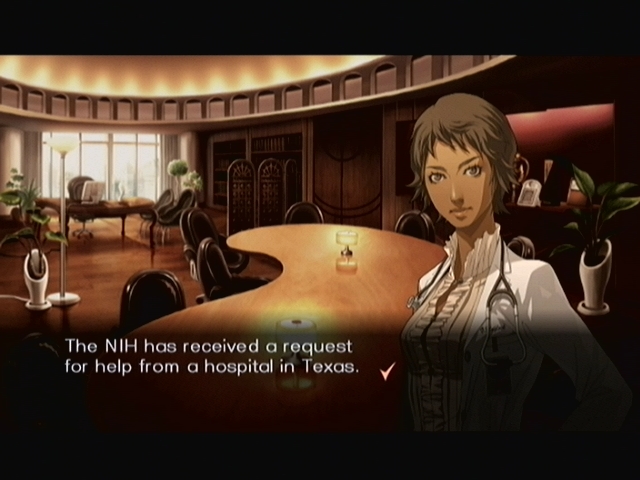
Valerie: They're having difficulty with the diagnosis. Based on the patient's chart, there's a good chance it's Stigma.
Episode 3-4: Cursed Burden
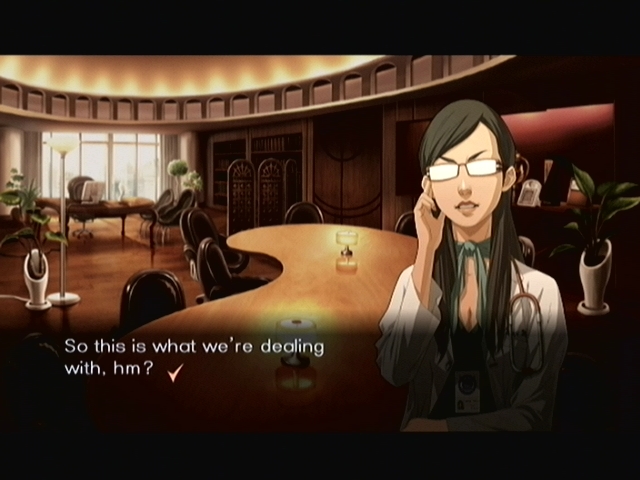
Everett: These two pictures were taken only a few hours apart? Look how far the focus has shifted. And its size has increased drastically!
Irene: A biopsy was attempted, but they were unable to obtain a sample of the pathogen. The patient will arrive in roughly three hours. Vaughn and Blaylock will be performing the surgery.
Markus: We'll check the patient's condition upon her arrival, and then proceed with the operation.
Valerie: We're treading in unknown territory, so we'd appreciate your support, Dr. Tsuji.
Tsuji: I highly doubt that you'll need my help, but I'll be ready regardless.
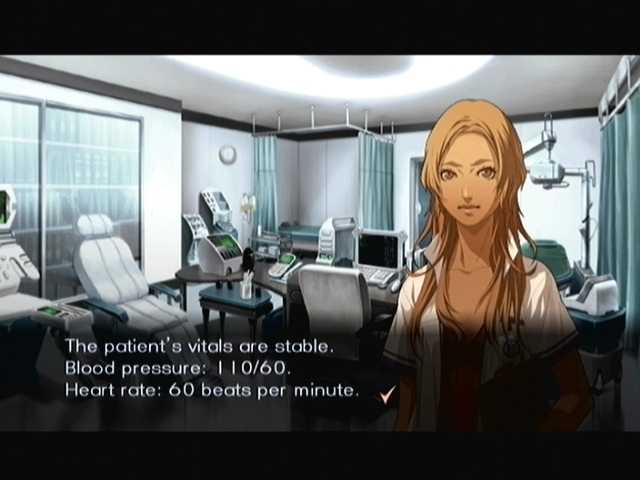
Valerie: Any case history?
Markus: She was involved in an accident two months ago. Laceration on her right thigh. Looks like they used artificial blood for the transfusion. Q-Heme blood from Synteq labs, to be exact.
Since this is THE FUTURE, this artifical blood may have all sorts of magical features, but real magical blood exists to refill volume to help red blood cells move through the body. This works on its own because blood has the ability to transport much more oxygen then it normally needs, so its covered in case of a loss of RBCs.
Elena: Are there any contraindications?
This just means "something that would increase the risk of the procedure."
Valerie: None that I'm aware of, but could you check with them, just in case?
Elena: Will do.
Markus: The affected area is the liver. The course of treatment will be determined during the procedure. I have a feeling this'll be different from the Professor's case.
Valerie: Even so, I'm sure our experience with Stigma will be invaluable. Let's stay positive.
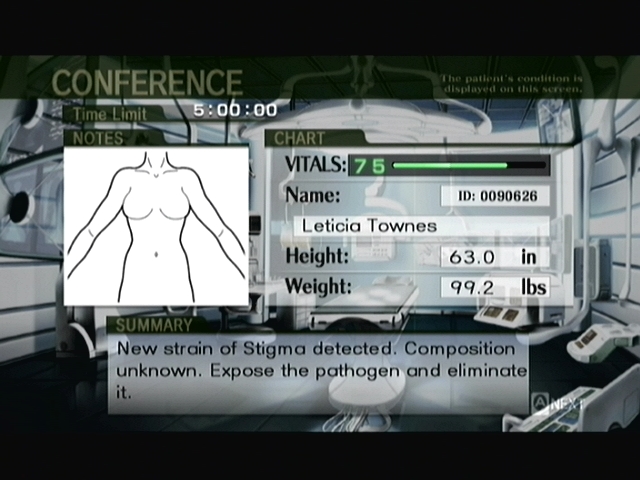
Elena: According to test results, this Stigma is completely different from the one we saw before. There are some similarities, though, such as high mobility.
Valerie: It tries every conceivable method to make its victim suffer…

Markus: If it's Stigma, then there must be a core somewhere, even if it looks different. If we can find and attack it, we might be able to identify the key to stopping it.
Everett: Now that you mention it, there was something in the report about a core.
Elena: That's right, we saw something like that when we were operating on Professor Wilkins.
Valerie: I'm surprised you remember, Markus.
Markus: Call it a hunch.
Valerie: Well, at least we have some hope of defeating it now.
I have no clue what they're talking about.
Tsuji: I'll be praying that I don't have to get involved.
Markus: It's haunting me… wherever I go…
Since Markus got the last one, this time we'll be using…
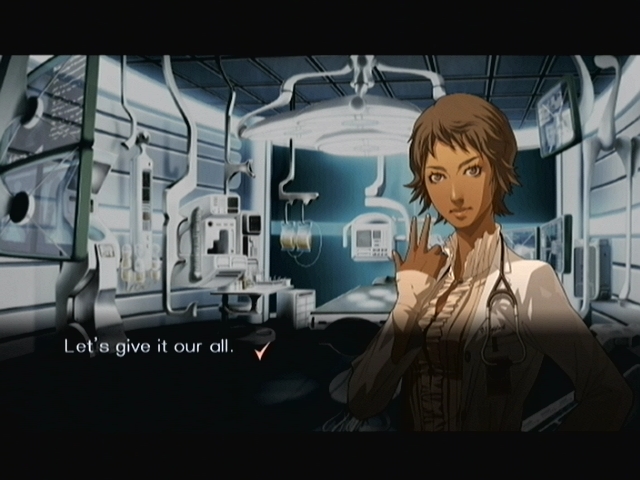
Valerie Blaylock, MD.
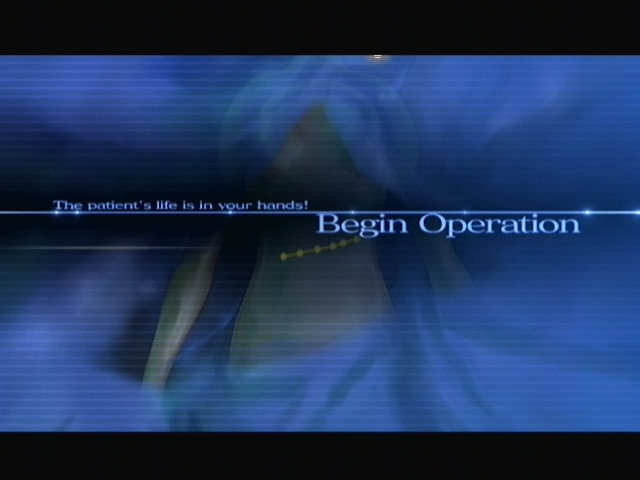
OPERATION VIDEO
Viddler Backup
This is the first major operation in a while, but it's not very difficult, surprisingly.
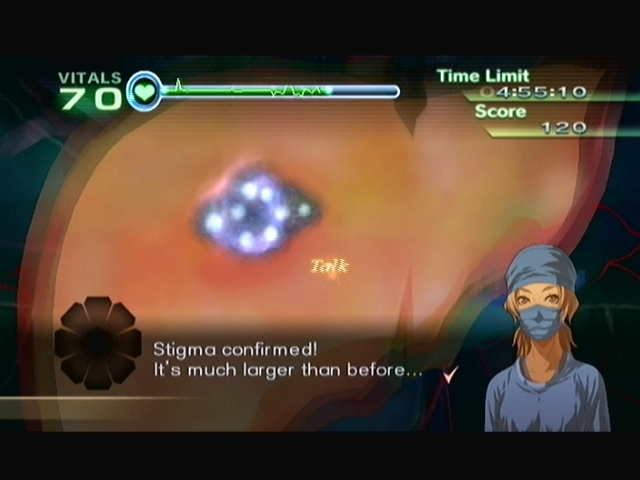
Stigma strain 2: Soma
This one means "body." Looking at it, Trauma Center players might be reminded of Pempti or Deftera, but unlike those two, Soma is very easy to defeat. It's probably the easiest supervirus in the series, depending on how you feel about Tetarti. Generally speaking, it just moves around and occasionally tries to attack by creating tumors, which is easy to prevent.
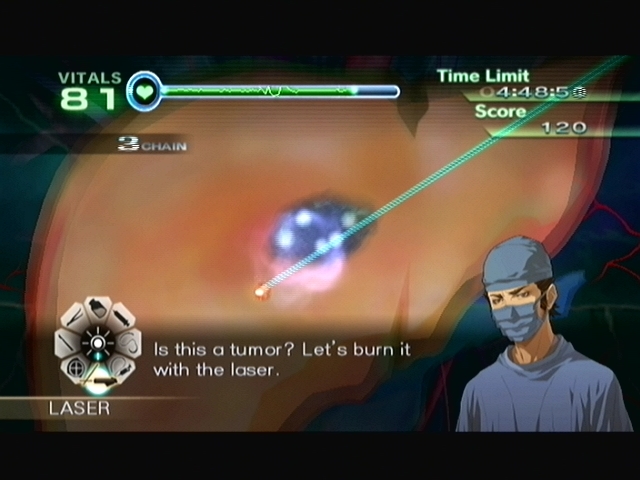
Soma wanders about, occasionally creating these little orange spots. All you need to do is laser them, but if left alone, they'll grow. This drains vitals a rather large amount, and you'll need to drain, cut, and remove the large tumor. Only one is created at a time, and at a rate that's easy to deal with, so this is no problem. You attack the "core" by draining it.
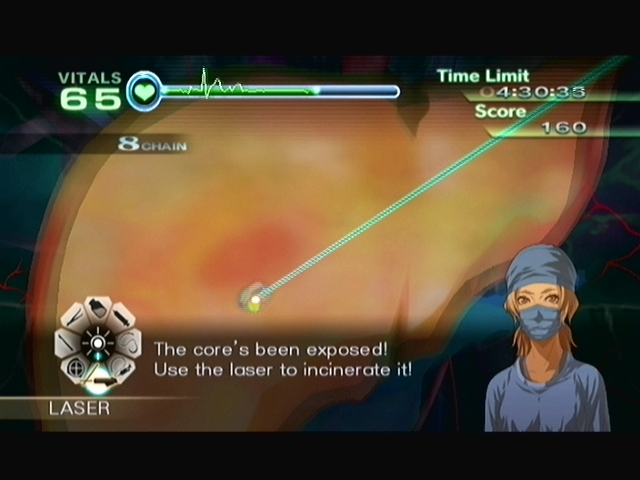
Once it starts flashing red, you'll know the core is about to appear. You need to laser it until you get an OK to deal damage. Your progress towards the next OK stays if the core escapes before you finish, so you can take several attempts to do this if needed.
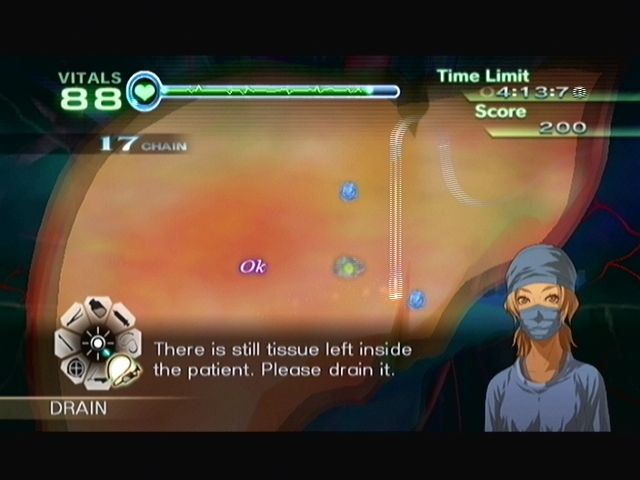
After the first hit, the core will spit out three of these blue spots in a triangle when the core is exposed. You need to drain them or they'll harden. The hardened spots are like the orange tumors, except you need to laser them instead of draining. You can improve your time on Soma by being able to predict how far away the spots will fly, and drain them fast enough that you can deal maximum damage to the core before it escapes. It's possible to get an OK every time if you're fast enough.
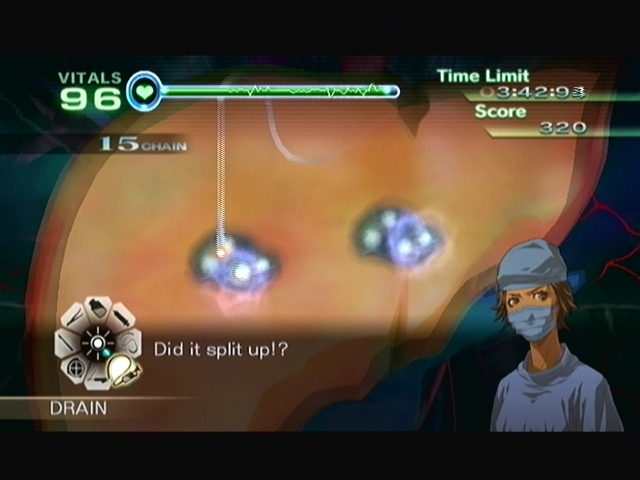
Once weakened, Soma has one last trick. One of these is fake, and will explode into a "diamond" of four blue spots if not drained completely. The real one is the one which drops orange tumors. Basically, pick one and start draining until a tumor is dropped. If you picked the right one, good. If not, you may have to deal with four blue spots. Either way, it's easy to avoid any major incidents, just be sure you don't let both explode at once. If the core escapes, it'll reform as just one big mass again until you get OK. In total, you need to damage Soma five times here. The splitting starts after three hits.
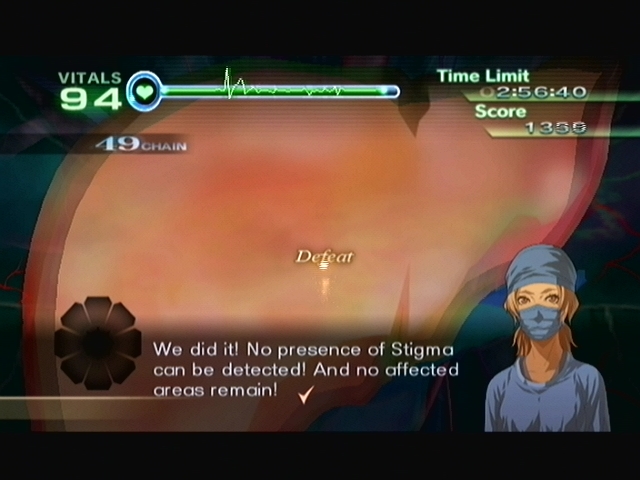
Even if you don't know all these tricks, you should be able to win without much trouble.
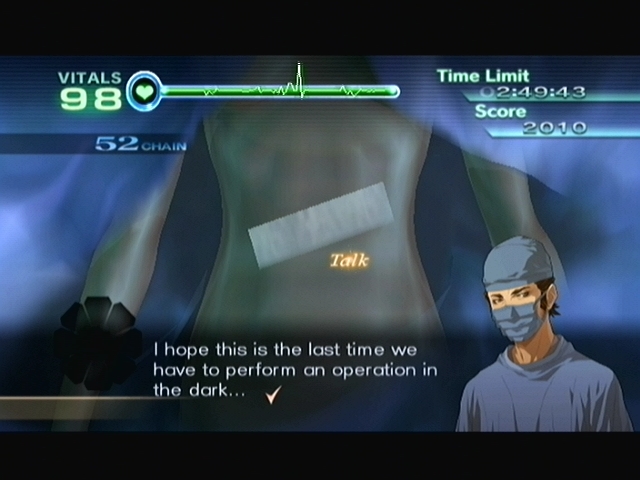
All the characters act as if this was tough, even though it was quite simple.
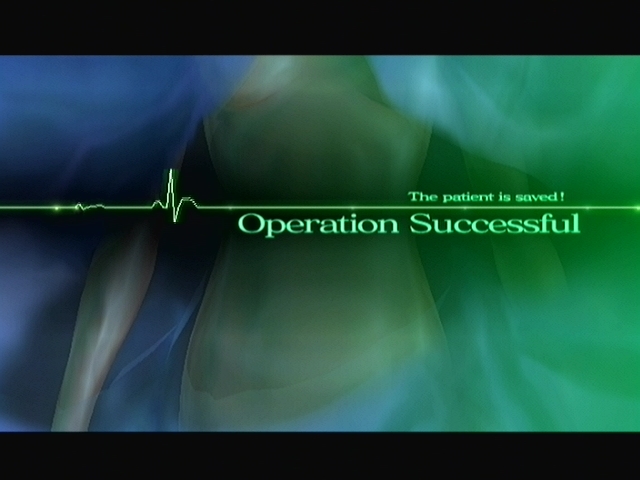
OPERATION END
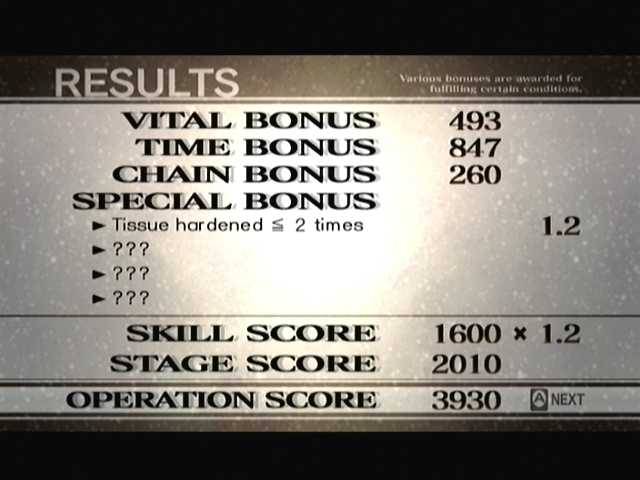
I made mistakes on this operation deliberately for the video, so no surprise I missed some stuff. Chain and time are the remaining bonuses, and they should be simple to obtain in a proper run.
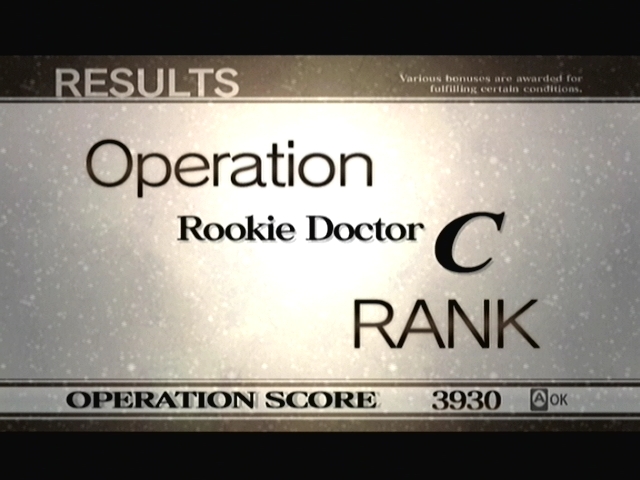
This is a nearly guaranteed XS with a little practice.
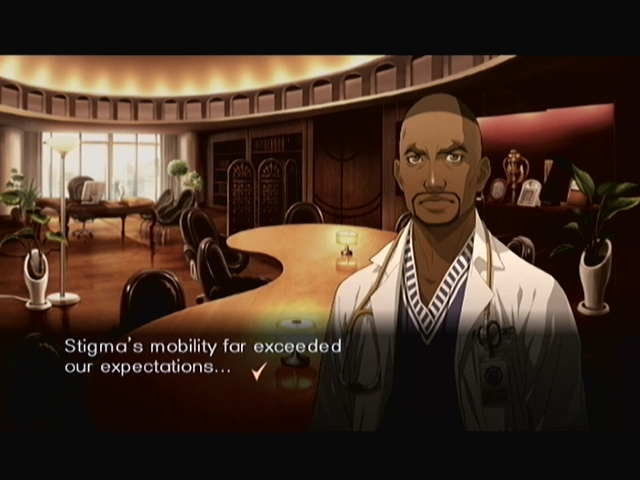
Tsuji: You did a great job treating it. I'm glad you're with us.
Valerie: Would you expect any less from Caduceus's own Special Disease Counteraction Team?
Irene: We'll hold a conference on this case of Stigma within the next few days. Of course, I'll need you to speak regarding today's operation and the patient's progress. Your report will also be forwarded to Health and Human Services, so please get started immediately.
Markus: Just give me a strong cup of joe, and I'll crank it out.
Irene: Good. …You know, there's no way we could have anticipated Stigma's metamorphosis. I was amazed at how well you adapted. I know you have the Healing Touch, but even so…
Markus: I guess I'm just lucky.
Next time: The chapter 3 finale, and the return of a classic operation.
Edit:
I actually don't know much about medicine or biology, so for those of you not reading replies, here are some on the topic of artificial blood. I love it when people add their knowledge on this stuff in the thread.
Thuryl posted:
To clarify this a little bit: when you donate blood, often the cells will be separated out from the plasma (the liquid part of the blood), because plasma is easier to store for long periods of time. If you lose a moderate amount of blood, they'll just give you plasma; if you lose a lot of blood, they'll give you red blood cells as well.
Artificial blood is a real thing that's being developed and is in clinical trials with humans right now. It's useful to help cope with blood shortages, and for people like Jehovah's Witnesses who won't accept blood transfusions. Making a synthetic product that's economical to produce, safe to inject into humans and capable of carrying useful amounts of oxygen isn't an easy task: current approaches include using fluids called perfluorocarbons that can dissolve large amounts of oxygen, or binding haemoglobin (the molecule that carries oxygen in red blood cells) to a carrier substance such as starch or fat. You can't just inject people with pure haemoglobin, because haemoglobin molecules have to be bound together in groups of 4 to work properly.
Gatac posted:
Toa little more, artificial red blood cells are relatively advanced in the lab and coming closer to viability. Check this article.
Which still doesn't have shit on what we could do if we could manufacture respirocytes.
Fully-featured "artificial blood" aside, blood expanders (which are used to replace small to medium volume loss quickly) have made leaps and bounds through battlefield use in the Iraq War. A lot of what used to be lab stuff is hitting the real world at a breakneck pace and the whole field is changing rapidly. I don't know how things will look in two years but even getting the advances in trauma medicine we've already figured out over there implemented back in the civilian world would save a good couple lives, I think.